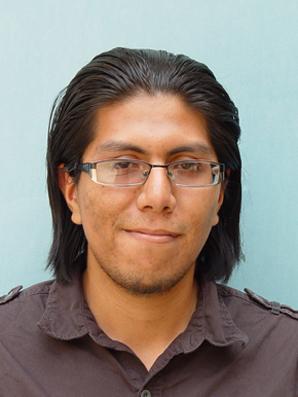Lectures, skepticism, aerospace and more — all are just another part of aerospace and computer engineer David Naiditch’s day-to-day life.
A graduate of UCLA, Naiditch received his bachelor’s degree in mathematics there and received a master’s in philosophy from UC Santa Barbara.
Naiditch got his start as a scientist doing lectures on various topics dealing with cutting-edge technology in areas such as telescope science, nanotechnology, emulating biology through technology (known as biomimetics), and more.
Naiditch continues to do lectures to this day, covering topics dealing with aerospace, upcoming technologies and outer space.
“[For example,] I’ve done lectures on photonics, where you use photons (particles of light) instead of electrons; it’s kind of the new wave of computers and electronics,” said Naiditch. “People are thinking of moving into an area called photonics instead of electronics.”
One of Naiditch’s most recent lectures was held at Glendale College Tuesday and dealt with the early nature of the universe, 280,000 years after its inception began with the Big Bang.
“We actually can take satellite images of the universe as it appeared as a little baby. This was about the time when the universe was a thousandth of the size as it currently is, it was very hot, because it was very soon after the Big Bang,” said Naiditch. “From these images we can actually extract a lot of information about the universe — how it evolved, how old it is, what it’s made of, what it’s future will be, what shape it has, and so on. There’s a wealth of information in these images that scientists are figuring out.”
But it was Ada — a programming language used to program aerospace hardware such as satellites, communications systems, airplanes and more — that was Naiditch’s most-covered subject, with two books on Ada resulting from his knowledge of the language.
“It’s a specialized language that is highly secure, it’s a very safe kind of language. A lot of European and American aerospace firms have used it — it’s a language that’s really specialized to address the needs of aerospace,” said Naiditch. “It’s also been used in the medical industry and in nuclear power – things that have to be very secure or reliable, things that you don’t want to shut down or fail.”
Naiditch also taught as well during his years after college, but soon found that it wasn’t enough. Seeking a place where he could apply his mathematical expertise, Naiditch entered the aerospace industry in 1982.
“I was a math major so I wanted to really apply my math and technical skill into an area that seemed to really be expanding,” said Naiditch. “Aerospace seemed a natural selection to me.”
“We worked on aircraft, everywhere from jet fighters and other kinds of craft, and I was primarily working on the software area, with signal processing.”
Signal processing deals with analyzing data that the radar picks up, said Naiditch.
“The mechanical radar is only part of it,” said Naiditch. “When they get the radar returned, there’s a lot of processing that goes on, software that makes sense of that information when the data gets to the pilot.”
In addition to working with the aerospace industry, Naiditch also writes for the Skeptics Society, a group devoted to questioning and examining various scientific, social and controversial topics.
As a senior scientist for Skeptic Magazine, Naiditch has written articles on different topics such as debunking scientific fears to reviewing books on science to philosophical entreaties.
“An article I did [examined] H.A.A.R.P. (an ionospheric research facility in Alaska) — a lot of people are very worried about what it might produce,” said Naiditch. “There’s a lot of misinformation about that, so I wrote an article about the different fears about that installation and what it’s actually used for.”
Another topic that Naiditch has talked about and debunked deals with the Large Hadron Collider (LHC), a particle accelerator used to determine the building blocks of subatomic particles and which people feared would create black holes, leading to the Earth’s demise.
“If [the LHC] could have created a black hole it would be an extremely microscopic, atomic-sized black hole and it would have vaporized so quickly that people couldn’t directly see it,” said Naiditch. “It would just instantly vanish much too fast to start sucking any matter in.”
According to Naiditch, he and the Skeptics Society have common ground when it comes to the values of science.
“I sort of agree with their philosophy, they do a lot of promoting of science and the scientific method, educating the public through the scientific method,” said Naiditch. “The main reason that I work with the Skeptics is to learn about science, scientific literacy for the populations.”
Besides dealing with science, Naiditch has explored the meaning of science and mathematics through a philosophical standpoint. Philosophy deals with issues that affect science and mathematics, but it’s its own discipline, said Naiditch.
“I did study the philosophy of mathematics and the philosophy of science, which deals with the nature of mathematics.”
According to Naiditch, math seems to govern every aspect of nature.
“One of the mysteries right now is why mathematics has been so successful in describing the world,” said Naiditch. “It seems like nature is written in mathematics. Physicists can describe reality using highly mathematical formulas and descriptions.”

